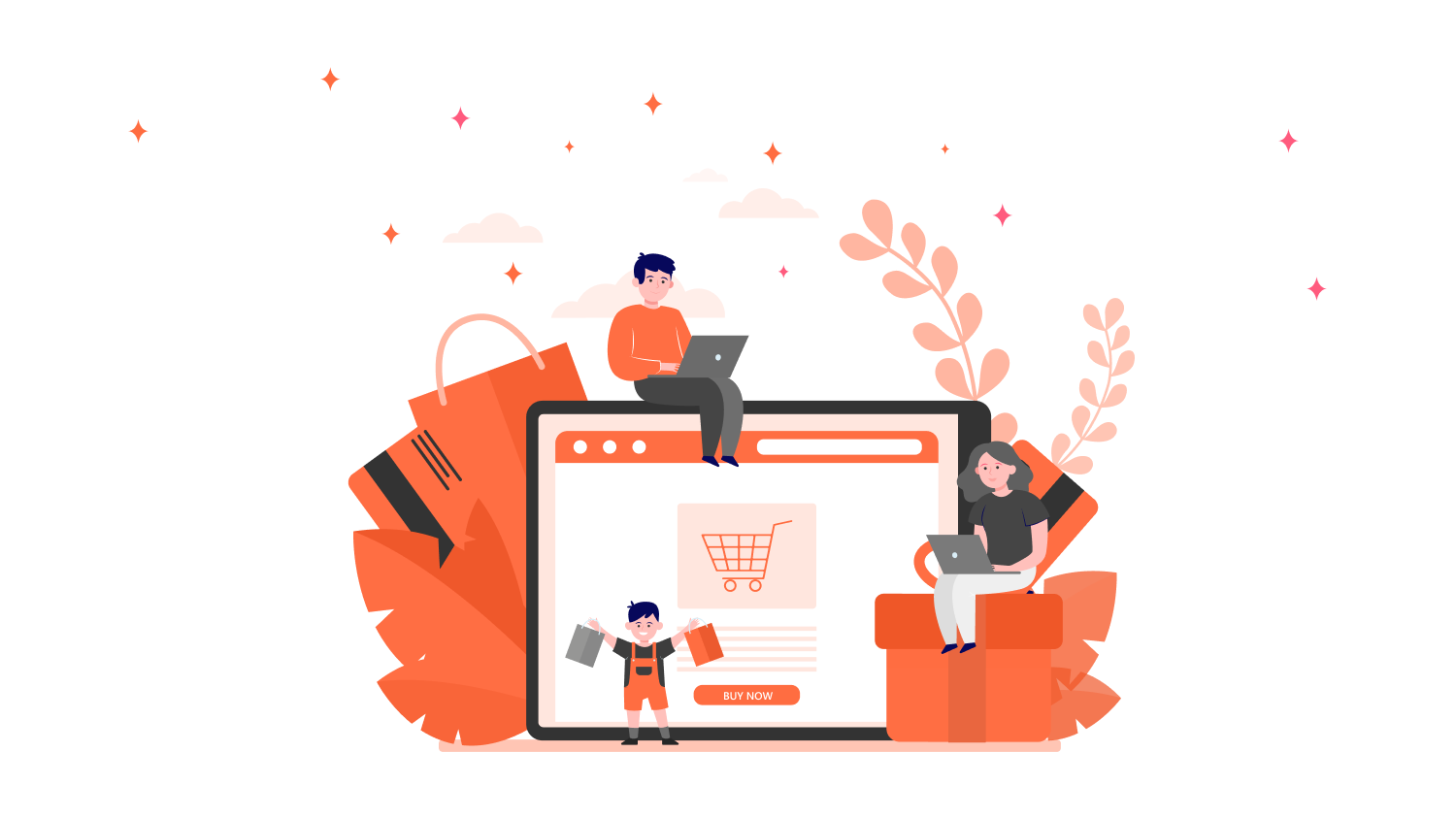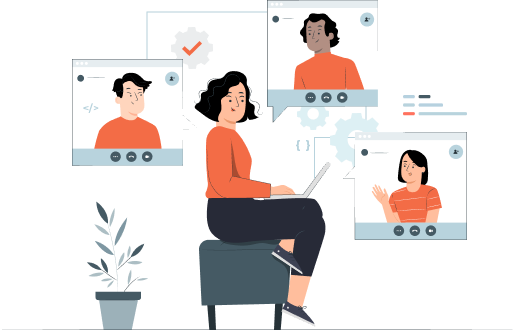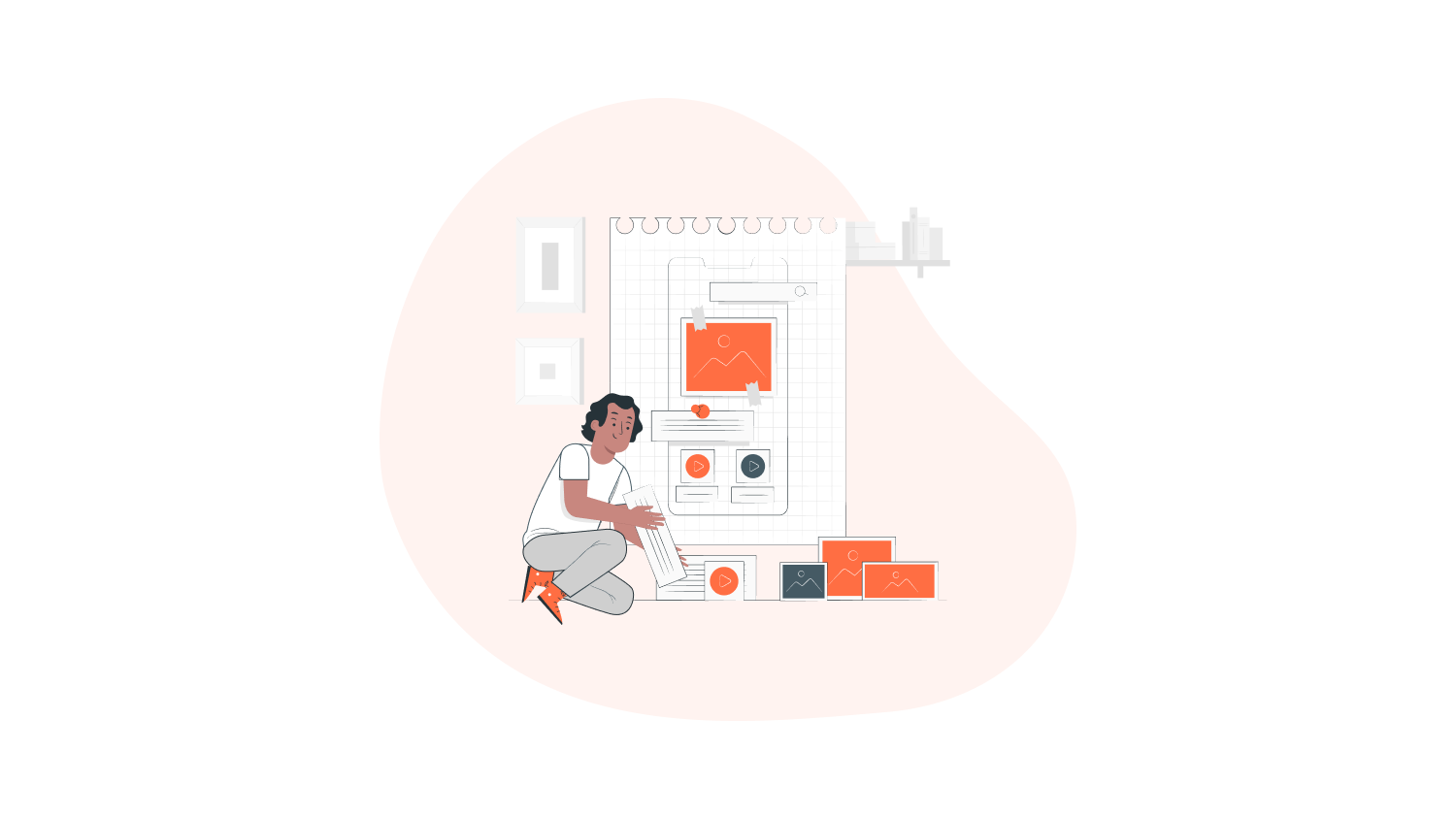Building an online store is similar to the stores in the mall where the first impression matters. However, unlike other websites, it requires a considerable amount of effort.
You need to have a clear understanding of branding, web design, and content strategy rather than just understanding the market you are going to enter.
So, read on if you want to know the crucial steps towards successful Ecommerce Web Development.
What is eCommerce Web Development?
Ecommerce Web Development is the process of developing an online store for selling products or services. Unlike other websites, it needs additional features like SSL configuration, site architecture, payment options, design, page load speed, etc.
According to survey reports, online business growth across the globe is remarkably faster and higher than traditional businesses. Moreover, the impact of its success even encouraged established companies to start online selling as a complementary effort.
Online stores enable users to discover, compare and purchase desired products or services conveniently from wherever they are.
And the competitive advantages offered by Ecommerce Web Development includes but not limited to the following:
- It increases your reach among your targeted local and international markets.
- It helps you reduce the operational and marketing costs required to run and promote a physical store.
- With 24/7 availability, your professional Ecommerce store can attract more prospective customers and can help you increase sales volume.
- You can track and analyse your user behaviour and can customise your products and marketing campaigns.
- It can generate more upselling and cross-selling opportunities with remarketing campaigns.
Like this, Ecommerce Web Development has endless business opportunities and can help you customise your online store according to your business needs and goals.
Before going into the Ecommerce Web Development process, you should understand the main types of Ecommerce business models. It is helpful to define the needs and goals of your online store that will help in the development process.
Types of eCommerce Business Models
The three main types of Ecommerce Business Models are:
Business to Customer (B2C)
Business to Customer is a common type of Ecommerce business. Amazon, Target, or Zappos, etc., are examples of B2C. Whenever you hit the checkout button, you have completed the transaction on a B2C website.
When a customer buys an item or service, it is sold straight from business to the customer without involving any third parties.
Business to Business (B2B)
As the name suggests, it sells products/services from businesses to other businesses. It is like one involving a manufacturer and a wholesaler or a wholesaler and a retailer.
Customer to Customer (C2C)
It is a business model where customers can trade with each other in an online environment. An example of C2C Ecommerce businesses is third-party stores like eBay. It allows individuals and retailers to promote and sell their products to their customers online.
As I told you earlier, Ecommerce Web Development is a huge amount of effort. So, let’s break down the process into 12 steps to help you reach your business goals.
The 12 key steps in Ecommerce Web Development Process
1. Figure out what you are going to sell
The first step in Ecommerce Web Development is deciding on what you are going to sell. There are plenty of businesses launched for many reasons. But, sometimes, you see a need for a specific market, and want to offer your potential customers the products/services that can solve their problems.
Whatever your business goals are, you need to do proper research regarding the products you will sell and the people you are going to sell them to. This can make a big difference in your success.
Also, when you decide to enter a specific market, find a niche with a little more breathing room. It can give you a better chance than your competitors.
It is also important to know the changing trends in the market you are entering. To run an Ecommerce business, you must know what your customers need right now and what they will need in the future.
Also Read: How to Do Market Research for a Business Startup?
2. Know your target audience
You decided to start an online business in an area that you are familiar with. So, you already know who your target audience is. But, even if you know your target audience, it is better to put a little more effort into understanding your audience better. It is highly beneficial for any kind of Ecommerce business.
Understanding your potential audience better may touch every part of your Ecommerce Web Development. It is because it is developed by keeping your customers in mind. That means the user experience, user interface, the visuals of your website, the content, etc., are tailored to your potential customers.
So, it is better to know your audience details such as:
-
-
- Their background
- Their income range
- Their age
- The competitors’ websites they are likely to purchase from, etc.
-
These details will let you create an Ecommerce business personalised to their tastes and needs. It will improve their shopping experience and help them build and enhance a stronger connection with you.
ALSO READ:
eCommerce App Trends & Statistics to Know in 2022
3. Give a unique business name
Consider your competitors first. Don’t fall into cliches or names that are similar to their business. Instead, you should look for names that make you stand out from your competitors.
Here are some tips to name your business:
-
-
- Make it concise. It helps for better brand recognition and makes it easy for people to remember.
- The name should be compelling enough to give people a wow feeling or make them think that you are different. A bland name can diminish a brand even if you have great products or services.
-
4. Register the domain name
After you have selected a compelling business name, you should find whether your idea is open and available for you to buy.
To do that, you can use business name/domain name generators like GoDaddy, Namecheap, etc., and find out your ideal domain name.
Suppose the business name you chose is “trends,” and you are looking for the domain name “trends.com” and if it’s not available to buy, you can generate a variety of URLs with the help of these domain name generators. For example, you will find something like .biz, .solutions, .online, etc. that are available.
After finding the ideal one, purchase it as soon as possible because a perfect URL might be snatched up at the later stages of your Ecommerce Web Development.
If you don’t have a domain name purchased, we can buy one for you from ResellerClub or any of the above-given domain name generators.
5. Determine your branding
You need to have a memorable logo, colour theme, and a unique voice for your Ecommerce website. All of these are essential elements in the web development process that delivers your brand’s personality.
Another key aspect of branding is telling your story of who you are. Tell your audience why your Ecommerce website exists and the brains behind it.
You need to humanise your brand to avoid the feeling that you are just another anonymous digital portal. So, personalise your brand to build trust.
Also, you should have a brand voice that keeps you unique from your competitors. It is like having an identity that makes your brand recognisable. It should be unique as well as consistent.
6. Select the right eCommerce website hosting platform
When it comes to Ecommerce platforms, you have a few options like Shopify, Magento, or a plugin like Woocommerce with WordPress to run your Ecommerce website. It is important to choose the right one as it can make or break your Ecommerce business.
It determines your business website’s accessibility and performance efficiency. So, it is crucial to choose quality over cost saving when it comes to website hosting and support.
The key parameters to consider when choosing an Ecommerce host are:
- Speed: Check whether your hosting provider can deliver good website speed.
- Uptime: Check the recent uptime records of other websites being hosted by the provider.
- Support: The supporting service your host provides, like some just provide infrastructure, and others give managed services that help you minimise troubleshooting response time and improve uptime.
- Scalability: Select the server that can adapt to your business requirements.
- Security: You are an Ecommerce website, and you need to accept payments online. Therefore, the server should be PCI-DSS compliant. Also, it is important to ensure data security through secure servers.
7. Build a content strategy
At the beginning of the development process, you should have a content strategy. It includes writing content, videos, images, infographics, etc., that better serve your audience.
It will help you tell your brand’s story and communicate what your products do. Build a content strategy tied in with knowing your audience.
To build a content strategy, you should:
- Know the common questions your customers will have about your products or services.
- Provide information that they will find useful.
- Check for the basic questions and provide information that your competitors don’t provide.
A content strategy will help you determine what you will need to include in your business website and help you communicate with your customers effectively.
So, altogether, you should know what your customers need and provide the best route to get the content to them.
8. Do Search Engine Optimisation
Your site needs to use proper SEO strategies to boost your ranking in search engines and reach more targeted audiences. In addition, you should make the entire website performance better to provide the best user experience.
Slow-loading pages or difficulty in navigation can annoy customers, and their chances of leaving your site are higher.
Strategies to solve those issues, such as making your website mobile responsive, optimising for voice search, etc., will help improve your user experience and boost traffic.
Read more: SEO best practices to improve your site ranking.
9. Determine product categories
Category plays an important role in Ecommerce Web Development. It seems like a list of products, but it is more than that.
The two main reasons you need to categorise your products are:
- When the visitors enter your online store, you don’t know what they are looking for and what perfectly fits their needs. Categorising your products will help them easily find the products that fit their needs.
- Your customers want to get an easy solution online in a few clicks. They are not interested in spending a lot of time figuring out or buying the products they want.
So, an ideal product categorisation will help your users get the best experience by allowing them to find and choose products as easily and fast as possible.
10. Photos and Videos on Your Product Page
According to the crazyegg.com report, the average time users spend on a website is less than 15 seconds. If you haven’t grabbed their attention in 15 seconds, then probably you are not going to.
So, here’s the deal:
You need to communicate your value proposition within 15 seconds to hold your user’s attention for much longer.
One perfect solution for grabbing attention is including compelling images with persuasive descriptions and/or videos. The key to success is having one or both located above the fold on every page.
Including videos can help you tell a compelling story that photos can’t. They are effective marketing tools that add value to your user’s online shopping experience.
In addition, it helps your users get a seamless shopping experience, which is unique to their choices and purchase habits.
11. Select your shipping software
Shipping software is a critical need for every online business. Some popular options like Ordoro, Shippo, and ShippingEasy will help you automate your shipping and delivery services.
Shipping software gives you access to:
- Better shipping rates.
- Multiple carriers.
- Bulk printing of shipping labels and packing slips, which can be sometimes branded or customised.
12. Choose the suitable Ecommerce Web Development Services
Choosing the right Ecommerce Web Development partner depends on your company’s requirements vs. the features offered by the partner.
Each business has specific needs and circumstances, and your Ecommerce Web Development process must be adapted to match those needs. So, you need to depend on a reliable tech partner that can understand your goals, requirements, and hurdles and takes the time to address them.
Thus, they can help you deliver an Ecommerce solution that meets your expectations and can fuel your business growth.
Also Read: Web App Vs. Website: Which is Right For Your Business?
Conclusion
From knowing what you are going to sell, and picking a unique business name, to choosing the right Ecommerce service providers plays a crucial role in your successful Ecommerce Web Development. It will ensure that your eCommerce website is optimised for most sales.
As a reliable Ecommerce web development company, the team of NeoITO scrutinises every detail, from the size and colour of the “Call to Action” buttons to the several steps involved in the checkout process.
Before we start the web development process, we will learn about your business requirements. And once we understand the market, you are focusing on and your goals, we start developing your product ensuring that you will stay ahead of the competition.
So, if you want to know more about the successful development of your professional online store, Talk to Our Tech Experts Today!




